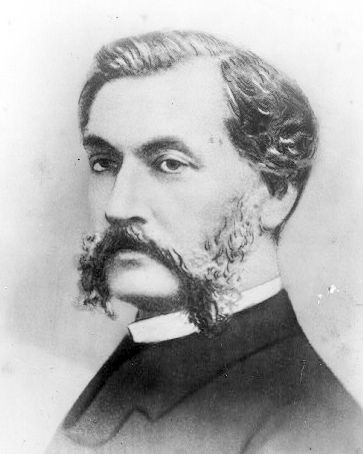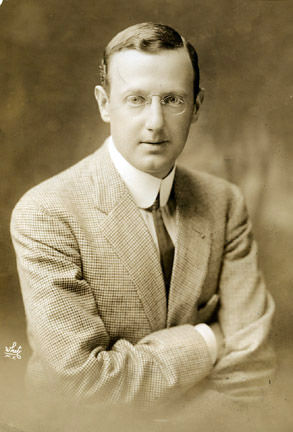Hollywood Becomes a Central Location For Film Production
- Brent Hecht
- Apr 14, 2024
- 5 min read
Important Dates
1886: Louis Le Prince invented the motion picture camera.
1886: Harvey and Daeida Wilcox moved from Topeka, Kansas to a place they called Hollywood, which they supposedly named after the populous holly bushes in the area.
November 1, 1913: The Count of Monte Cristo is created and is recognized as a turning point in the creation of motion pictures.
1913: Jesse Lasky moved to Hollywood and started the Jesse Lasky Feature Play Company.
1914: Lasky's company merged with the Famous Players Film Company in New York City to create the Famous Players-Lasky Company. The company eventually became known as Paramount Pictures.
1920: The Famous Players-Lasky Company completed new film studios in New York City and London.
Motion Pictures Prior to 1913
In 1913, the motion picture industry was in its infancy and was centered around New York City and London. On November 1, 1913, the first major motion picture was produced known as The Count of Monte Cristo based on the Frenchman, Alexandre Dumas' 1844 book. It was a silent film directed by Joseph Golden and Edwin Porter of the Famous Players Film Company at Crystal Studios in New York City. There were films previously produced but some would say that this film brought motion pictures into a new era.1
The Invention of Motion Picture Cameras

Louis Le Prince
Louis Le Prince first invented a primitive motion picture camera in 1886. He applied for the patent for his camera containing sixteen lenses on November 2, 1886. He received both American and British patents in 1888. Reportedly, the first ever use of his camera was Le Prince filming his son playing the accordion in October 1888. Before Le Prince could thoroughly promote his new invention, he mysteriously disappeared on September 16, 1890. He was last seen taking a train to Paris before which he planned to travel to the United States to showcase his invention.2
Thomas Edison
Thomas Edison, among his many inventions, invented the phonograph in 1877 which was a device that could record and play back sound waves. Despite being mostly deaf, Edison said "of all my inventions, the phonograph is my favorite."3 Despite evidence today that proves Louis Le Prince was the original inventor of motion picture cameras, Edison was named as the original inventor of the motion picture camera in 1894.4
The Early History of Hollywood
The History of Hollywood
Prior to 1913, the film industry was centered in and around New York City as well as London and had not yet begun to have a major affiliation with southern California. That said, Hollywood's history begins in 1886 when Harvey Wilcox, and his wife Daeida Wilcox moved from Topeka, Kansas and purchased 120 acres of apricot and fig groves that make up present day Hollywood. As one story goes, they named their land Hollywood due to the holly bushes that scattered the landscape. According to another story, Daeida named it Hollywood simply because she liked the name.5 Hollywood eventually became the center of the motion picture industry due to its more favorable climate, allowing year-round filming.
The Nestor Film Company And Universal Film Company
On October 27, 1911 the Nestor company founded the first permanent movie studio in Hollywood, California on the corner of Sunset Boulevard and Gower Street. Nestor was originally started in Bayonne, New Jersey in 1909. Within three months of Nestor setting up shop in Hollywood, fifteen other film companies also made the move.6
A year later, the Universal Film Manufacturing Company(UFMC) was founded on April 30, 1912 in New York City. The company was formed in a merger which included the New York Motion Picture Company, Champion Film Company, and the Nestor Film Company among others on May 20, 1912. Although UFMC was founded in New York, like many other companies, it began to focus its resources in southern California following 1912.7
Universal City Studios was opened in March 1915 near Hollywood and became the largest production facility in the world comprising 230 acres.8 Today, Universal Pictures is headquartered in Universal City, California and its parent company, NBC Universal, is headquartered in New York City.
Jesse Lasky Starts His Film Company in Hollywood
In 1911, Jesse Lasky moved to New York City where he became a booking agent and then in 1912, he became a failed New York City restaurateur. Following his endeavors in the restaurant business, Lasky packed his bags and set out for California to start his film production company.

In 1913, Jesse Lasky created his film production company in the Los Angeles area when his company, The Jesse Lasky Feature Play Company rented a small barn outside the city at the corner of Selma and Vine. The company was founded by Jesse Lasky, who had also previously been a producer on Broadway, along with partners Cecil B DeMille, Samuel Goldwyn, and Arthur Friend. In 1914, the company released their first major success, The Squaw Man, directed by DeMille. The Squaw Man cost about $15,000 to make and created $244,000 of profit for the young movie company.9 Then, in 1916, the company combined with the New York film company called Famous Players. Famous Players was the company responsible for the 1913 release of The Count of Monte Cristo. In 1920, the combined company completed a large studio in Astoria, New York, today known as the Kaufman-Astoria and also completed a new studio in London known as Islington Studios.10
Jesse Lasky was the head of the Lasky-Famous Players company until 1932 when he stepped down. He is known for producing many major motion pictures for the company during the 1920s and also navigating a major FTC lawsuit due to the company's monopolistic practices in the film industry.11 Some of the company's 1920s films include Dr. Jekyll and Mr. Hyde, The Sheik, The Ten Commandments, and Blood and Sand.

Today, you may know the Lasky-Famous Players Film Company as Paramount Pictures and it is the only motion picture company whose headquarters remain in the Hollywood district of Los Angeles. Paramount Global, the parent company, finds its headquarters at One Astor Place in Manhattan, New York.
Sources:
“The Count of Monte Cristo (1913).” 1913. IMDb. November 1, 1913. Accessed April 13, 2024. https://www.imdb.com/title/tt0002767/.
Davidson, Lucy. “Louis Le Prince: The Father of Cinematography Who Vanished.” History Hit. Accessed April 13, 2024. https://www.historyhit.com/culture/louis-le-prince-the-father-of-cinematography-who-vanished/#.
Musical Observer. United States: Musical Observer Company, 1922. 23.
Davidson. Louis Le Prince.
Higgins, Lila. “California Holly: How Hollywood Didn’t Get Its Name.” Natural History Museum. Accessed April 13, 2024. https://nhm.org/stories/california-holly-how-hollywood-didnt-get-its-name.
Bahn, Paul. The Archaeology of Hollywood: Traces of the Golden Age. United States: Rowman & Littlefield Publishers, 2014.
“Universal Studios Lot | Universal Studios.” n.d. Universal Studios Lot. Accessed April 13, 2024. https://www.universalstudioslot.com/about-us.
Universal Studios Lot.
Bahn. The Archaeology of Hollywood.
“Hollywood by the Canal: A Brief History of Islington and Gainsborough Studios.” 2021. Friends of Islington Museum. June 28, 2021. Accessed April 13, 2024. https://friendsofim.com/2020/07/23/hollywood-by-the-canal/.
Anderson, Mark Lynn. “The Historian Is Paramount.” Film History 26, no. 2 (2014): 1–30. https://doi.org/10.2979/filmhistory.26.2.1.
.png)